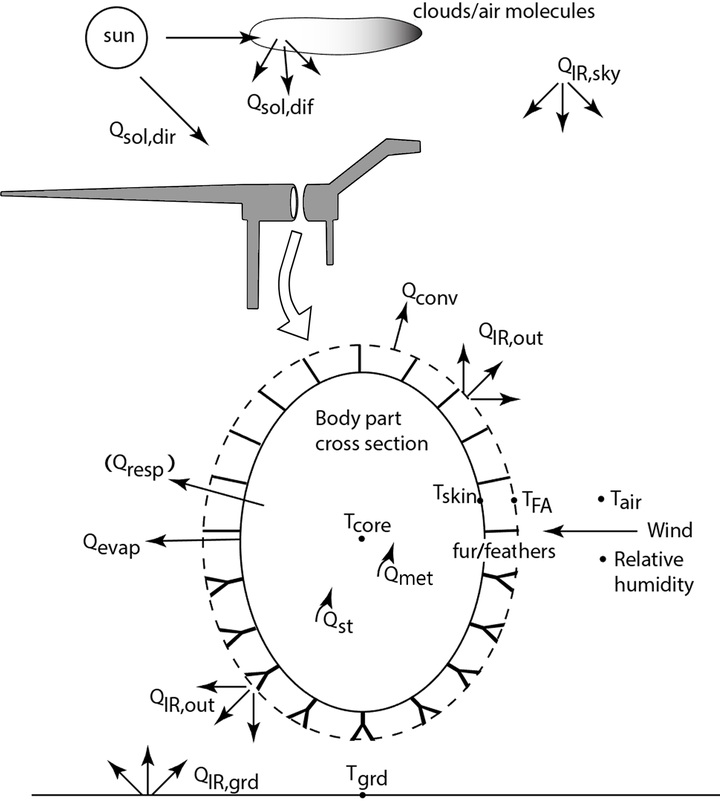Modeling Dragons: Using linked mechanistic physiological and microclimate models to explore environmental, physiological, and morphological constraints on the early evolution of dinosaurs

Abstract
We employed the widely-tested biophysiological modeling software, Niche Mapper™ to investigate the metabolic function of the Late Triassic dinosaurs Plateosaurus and Coelophysis during global greenhouse conditions. We tested a variety of assumptions about resting metabolic rate, each evaluated within six microclimate models that bound paleoenvironmental conditions at 12° N paleolatitude, as determined by sedimentological and isotopic proxies for climate within the Chinle Formation of the southwestern United States. Sensitivity testing of metabolic variables and simulated “metabolic chamber” analyses support elevated “ratite-like” metabolic rates and intermediate “monotreme-like” core temperature ranges in these species of early saurischian dinosaur. Our results suggest small theropods may have needed partial to full epidermal insulation in temperate environments, while fully grown prosauropods would have likely been heat stressed in open, hot environments and should have been restricted to cooler microclimates such as dense forests or higher latitudes and elevations. This is in agreement with the Late Triassic fossil record and may have contributed to the latitudinal gap in the Triassic prosauropod record.